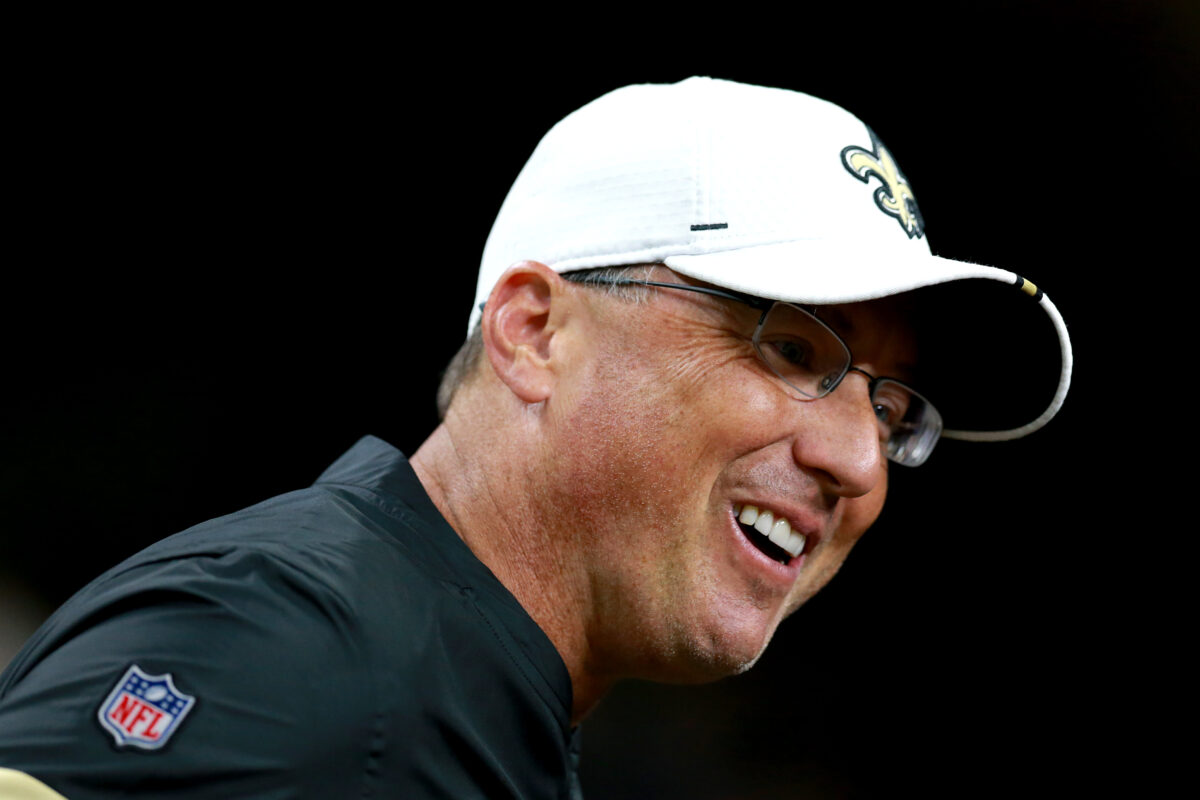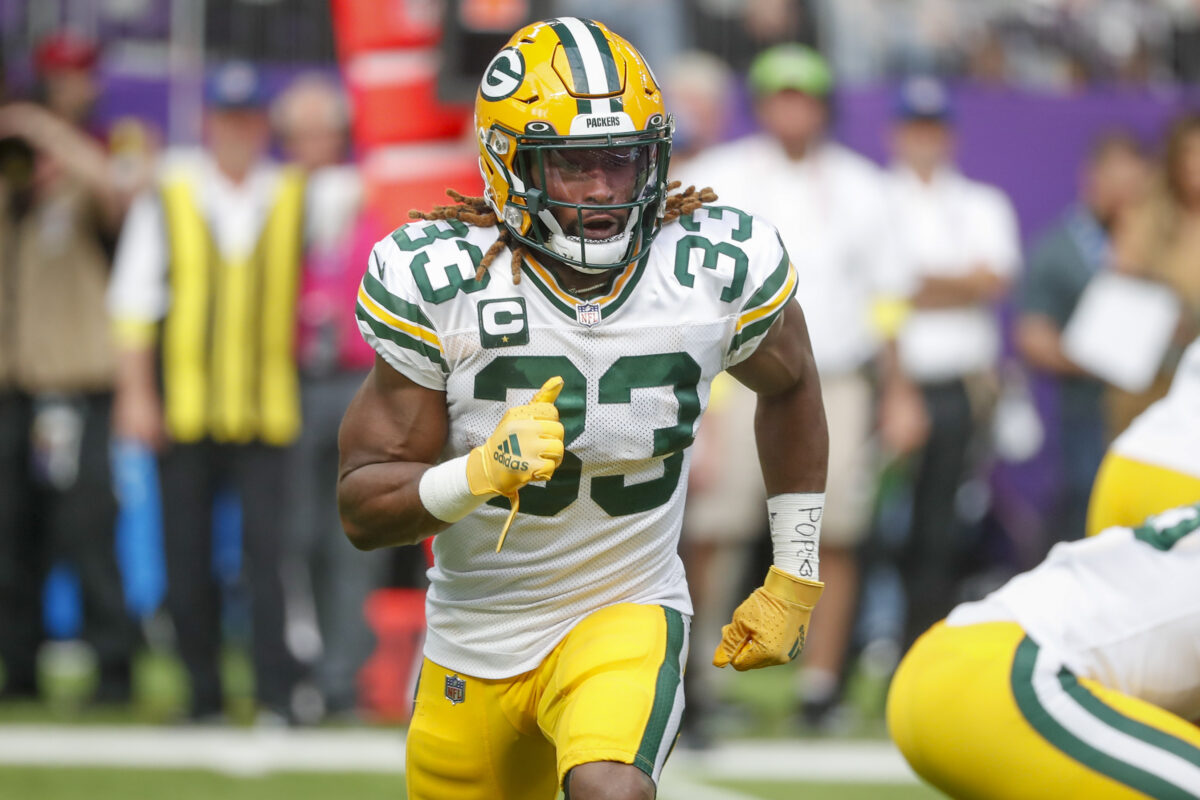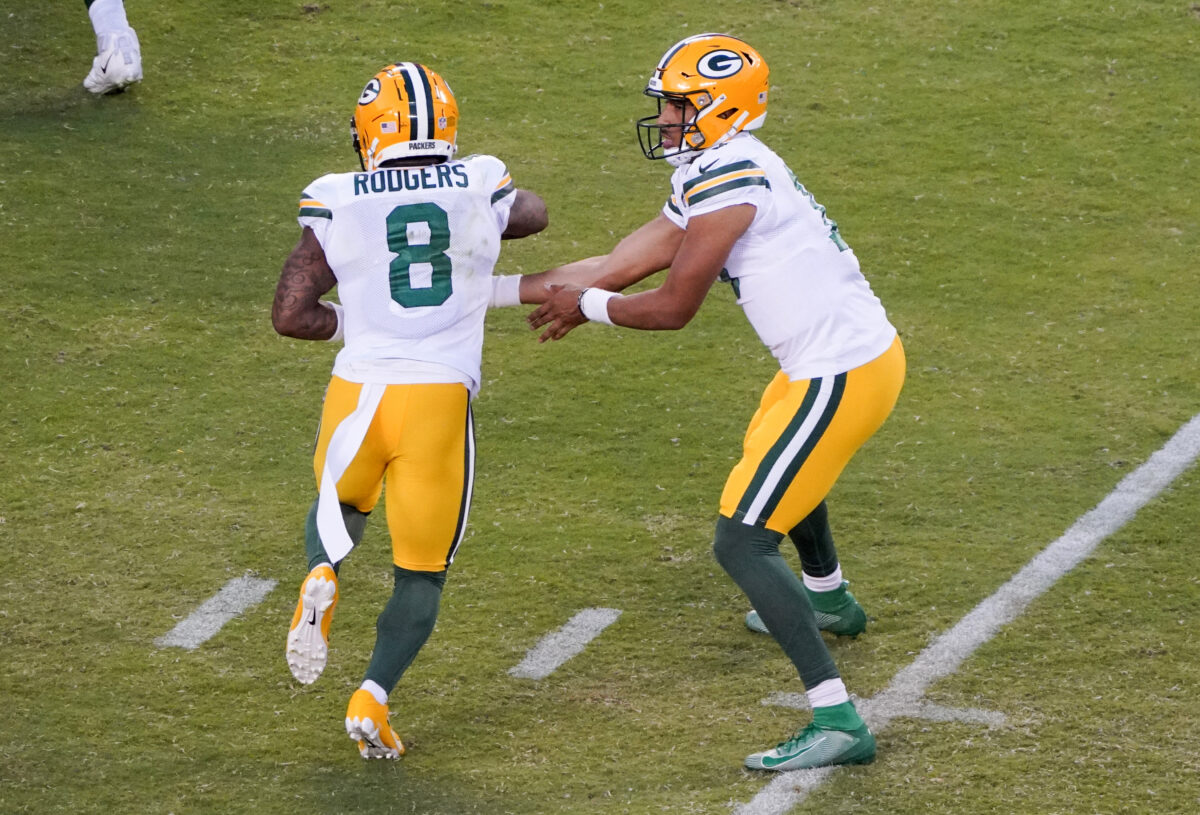Play action, pre-snap motion, and red zone creativity. Pete Carmichael gave the people what they wanted in the New Orleans Saints’ Week 5 offensive eruption, putting the New England Patriots away handily 34-0. Fans and analysts covering the team saw everything they had asked for from Carmichael’s offense on the afternoon.
The Saints ramped up the use of pre-snap motion in Week 5, going from ranking last to a rate that would place well inside the league’s upper half. That added hesitation as the defense was forced to account for a player in motion paid off in a big way to give the offense an advantage they desperately needed.
And play action picked up in the passing game, too; Derek Carr was able to use his forever-underrated athleticism to throw on the move and link up with Michael Thomas on a couple of big gains. Carr has the wheels to make plays as a runner and force defenses to respect him as more of a run threat. Getting him out of the pocket and in space has been an inefficiency for this offense that they’re now course-correcting.
We’d be remiss to not mention Carmichael’s gutsiest play call of the day: a shovel pass to tight end Foster Moreau on second down from the New England 6-yard line that asked him to follow his blockers into the end zone. That’s exactly the sort of innovation and creative use of personnel that’s been missing through the first four weeks of the season.
New Orleans native Foster Moreau with his first TD as a Saint!!#Saints | 📺: CBS pic.twitter.com/j25VYOKskz
— New Orleans Saints (@Saints) October 8, 2023
And the players took notice. Alvin Kamara praised Carmichael after the game, saying that “Pete was good today. It was good to see Pete out there having fun. It was like he took a deep breath and just exhaled.”
Will Carmichael keep it up in the months ahead? Let’s hope so. This was easily the most entertaining game of the Saints’ season so far, and results like this would go a long way towards quieting the discontent about his position on staff. He can’t keep running Sean Payton’s playbook for Drew Brees without Payton or Brees. Whether it’s done by choice or kicking and screaming, the Saints offense must be dragged into the modern era. They have too many talented personnel to settle for less. Sunday’s performance was a big step in the right direction.
[lawrence-auto-related count=4]




